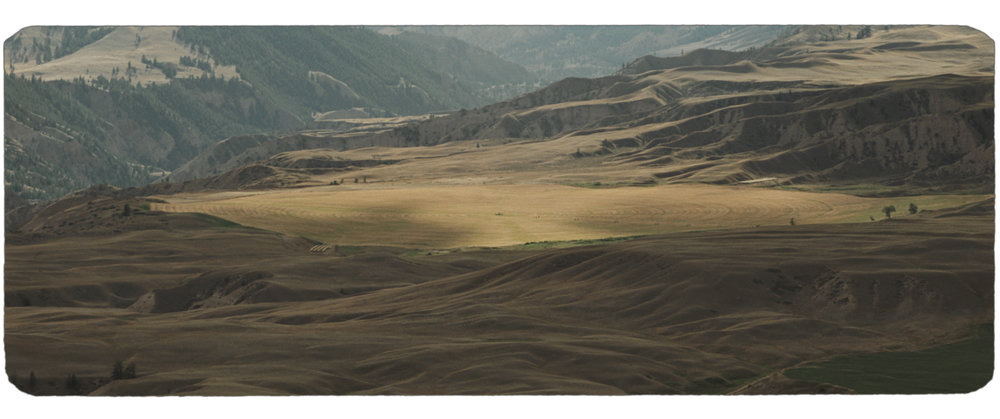If the frigid days of January are a bit too nippy to let you get out and enjoy nature, the films of Ryan Ermacora and Jessica Johnson are welcome retreats to the great outdoors. Ermacora and Johnson present a selection of their short films to kick off this season of Toronto’s Vertical Features screening series and they’re among the most gorgeous landscape documentaries one will ever see. They’re also among the most provocative and effective. The duo invites audiences to roam the great outdoors and bask in nature thanks to some languid long takes and immersive sound mixes that put viewers immediately within these landscapes.
In tasking audiences with these long and pensive shots, however, the filmmakers encourage cinephiles to consider the lands before their eyes. Intrusions of human activity disrupt the peaceful frames. Sometimes these intrusions are visual, but oftentimes they are aural. The ingenious sound design of each film plays with the perceived naturalism of the soundscape and uses levels, textures, and volumes to evoke sensations, often violent ones, about the impact that human activity, particularly of the settler-colonial variety, has on lands we call home. Their films frequently whisk audiences to unceded territories and provoke further questions of longevity, legacy, and responsibility through the durations of each shot.
Empire Valley | Trailer from Ryan Ermacora on Vimeo.
Empire Valley, for example, ends with a sparse title card that informs readers the film was shot on Tsilqot’in and Secwépemc territory. The film presents picturesque views of dense forests that at first invite audiences to take deep breaths of clean air—a respite from all that pollution in urban jungles—while the loud wind whips around the theatre. The longer one looks at the lush green landscape, however, the closer one can discern flickers of activity cutting through the frame. Clouds of dust whirl through the winding roads as heavy trucks lug refuse ripped from the land thanks to British Columbia’s resource extraction industry. The noise becomes deafeningly loud as truck upon truck speeds around the mountains and as helicopters ride into the frame, polluting the peaceful soundscape with godawful noise. Trees and lakes are replaced with houses and cars. The beautiful sight that once was a green valley is now all but a parking lot. With nary a word, the ironically titled Empire Valley presents the past and present this landscape has seen as the peaceful serenity enjoyed by its original inhabitants becomes violently punctuated by the colonial power. For one culture, the territory is life; for the other, it’s something to be used and discarded.
The effects of industry and exploitation are pointedly clear in E&N. This brief but effective film mixes the undulations of waves with the collisions of metal between trains and train tracks as quicker shots contrast the natural landscape and the manmade path plowing through it. The film, like Empire Valley, depicts a land seized by empire as it rolls the camera through the Hul’qumi’num territory cheated by the “great land grab” that proved lucrative for the Esquimalt and Nanaimo Railway Company and, eventually, the Canadian Pacific Railway as land was taken in the name of expansion. E&N, like Empire Valley, considers the land as commodity and the payoff in such a transaction when fossil fuel economies are facing the same extinction as many Indigenous communities on which the railroad was paved.
The theme of degeneration similarly echoes in the haunting Ocean Falls. This film takes audiences to the titular ocean-side small town of British Columbia, which is accessible only by boat or by airplane. Where Empire Valley presents a rupture between nature and development, Ocean Falls blurs the two as the film tours a neighbourhood of dilapidated houses and vacant buildings around the town’s derelict pulp and paper mill. The drip-drip-drip of the water overrides the falling of the rain as the film evokes the image of a ghost town, a place left to rot. Contrasts between the natural landscape (ocean views and glimpses of the verdant woodland) give way to empty lobbies and industrial spaces overgrown with weeds as nature blurs with development. Voiceover interviews with some of the remaining (elderly) inhabitants speak to a community that has simply been abandoned and forgotten. The film leaves viewers questioning the purpose in putting so many resources into developing an industry, only to move forward so quickly that an entire community remains discarded as a site of decay. (Subscribe to print magazines to help those paper mills!)
Ocean Falls | Trailer from Ryan Ermacora on Vimeo.
Human activity is more present—but equally ghostly—in Einst. This one-take wonder highlights the deceptive simplicity of the Ermacora/Johnson aesthetic. The film features a fixed view of a river on unceded Tsleil-Waututh territory with the camera standing by the shoreline gazing out at towards the bank on the other side. The soundtrack bubbles and murmurs with the ambient noise of the setting while footsteps drift in and a woman eventually enters the frame. She takes a dip and the sound fades out as she too disappears from the film. The levels on the sound design play with notions of presence and absence as the film leaves us looking at the river and we wait for the swimmer to resurface—or perhaps forget about her.
Memory, however, drives Hazel Isle, which is the only film of the five shorts screening at Vertical Features to take place outside North America/Turtle Island. The thematic concerns of the film are on the same continuum as the others as Hazel Isle reflects upon the Scottish countryside and Gaelic traditions that have eroded as the years have gone on. The film features shots of shorter duration and a soundtrack peppered by more voices than one expects after seeing the previous works, but the Gaelic brogues of Hazel Isle are effective as they articulate concerns of a fading culture in cadence rarely heard. The villagers take the filmmakers on a tour to ensure their camera captures the sunlight at its peak of beauty and there is a sense of history being passed on, shared, and respectfully transported. Peppered by occasional scratches on the film and flickers of exposure, the images present this time capsule of a territory. “It’s quite difficult,” one interviewee notes of life on the isle where sheep roam in the rolling countryside and stone houses and fences mark a community that has endured through generations. What results is an elegy for a way of life that’s being drowned out by a settler culture, a point poignantly emphasized as the speaker’s voices fade out and a traditional Gaelic tune carries the film through the sunset and into the credits.
Whether in the Canadian wilderness or on the cliffs of Scotland, the films of Ermacora and Johnson harness the power of the landscape to contemplate the relationship between humans and their environments. The films are effective in their sparse and immersive designs that present a view like a thoughtful postcard offering a message of the urgent responsibility we have to the land. As retreats to these serene environments are more likely to occur while sitting in a darkened movie theatre, rather than enjoyed in the warmth of the greenspaces themselves, these films are thoughtful and necessary calls to action.











